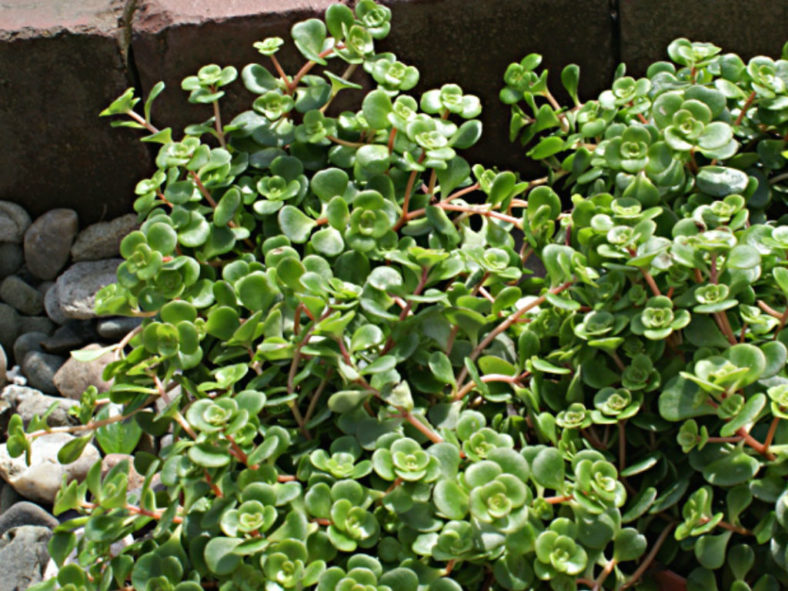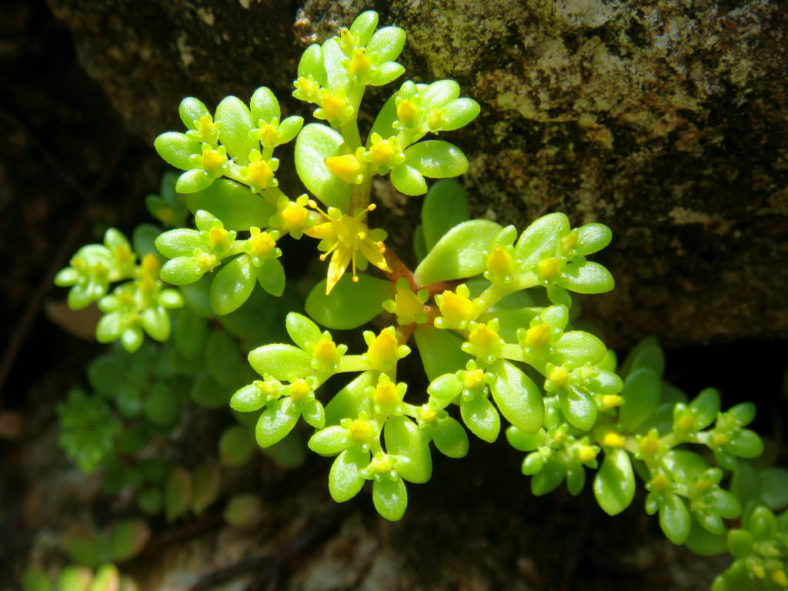Scientific Name
Sedum makinoi Maxim.
Common Name(s)
Stonecrop
Synonym(s)
Sedum alfredii var. makinoi, Sedum obovatum, Sedum subtile var. obovatum
Scientific Classification
Family: Crassulaceae
Subfamily: Sempervivoideae
Tribe: Sedeae
Genus: Sedum
Etymology
The specific epithet "makinoi" (pronounced "MACK-kin-oy") honors Tomitaro Makino (1862-1957), a pioneer Japanese botanist noted for his taxonomic work.
Origin
Sedum makinoi is native to Asia.
Description
Sedum makinoi is a low-growing succulent with slender, creeping stems and fleshy, green leaves arranged in opposite pairs. It can grow 4 inches (10 cm) tall. The leaves are flat and rounded, measuring up to 0.6 inches (1.5 cm) in length and 0.4 inches (1 cm) in width.
The flowers are yellow, star-shaped, and appear in mid-summer.

Cultivars of Sedum makinoi
Hardiness: USDA hardiness zones 6a to 9b: from -10°F (-23.3°C) to 30°F (-1.1°C).
How to Grow and Care for Sedum makinoi
When growing Sedums, keep in mind that these plants need very little attention or care. They will thrive in conditions where many other plants thrive, but also do just as well in less hospitable areas. They are ideal for that part of your yard that receives too much sun or too little water to support the growth of other plants. A common name for Sedum is Stonecrop because many gardeners joke that only stones need less care and live longer.
Sedum is easily planted. For shorter varieties, simply laying the plant on the ground where you intend to grow it is usually enough to initiate growth there. They will send out roots from wherever the stem touches the ground and the root itself. To ensure the plant starts well, add a very thin layer of soil covering.
You can break off one of the stems for taller varieties and push it into the ground where you want to grow it. The stem will root very easily, and a new plant will be established in a season or two.
Learn more at How to Grow and Care for Sedum.
Links
- Back to genus Sedum
- Succupedia: Browse succulents by Scientific Name, Common Name, Genus, Family, USDA Hardiness Zone, Origin, or cacti by Genus
Photo Gallery
Click on a photo to see a larger version.


